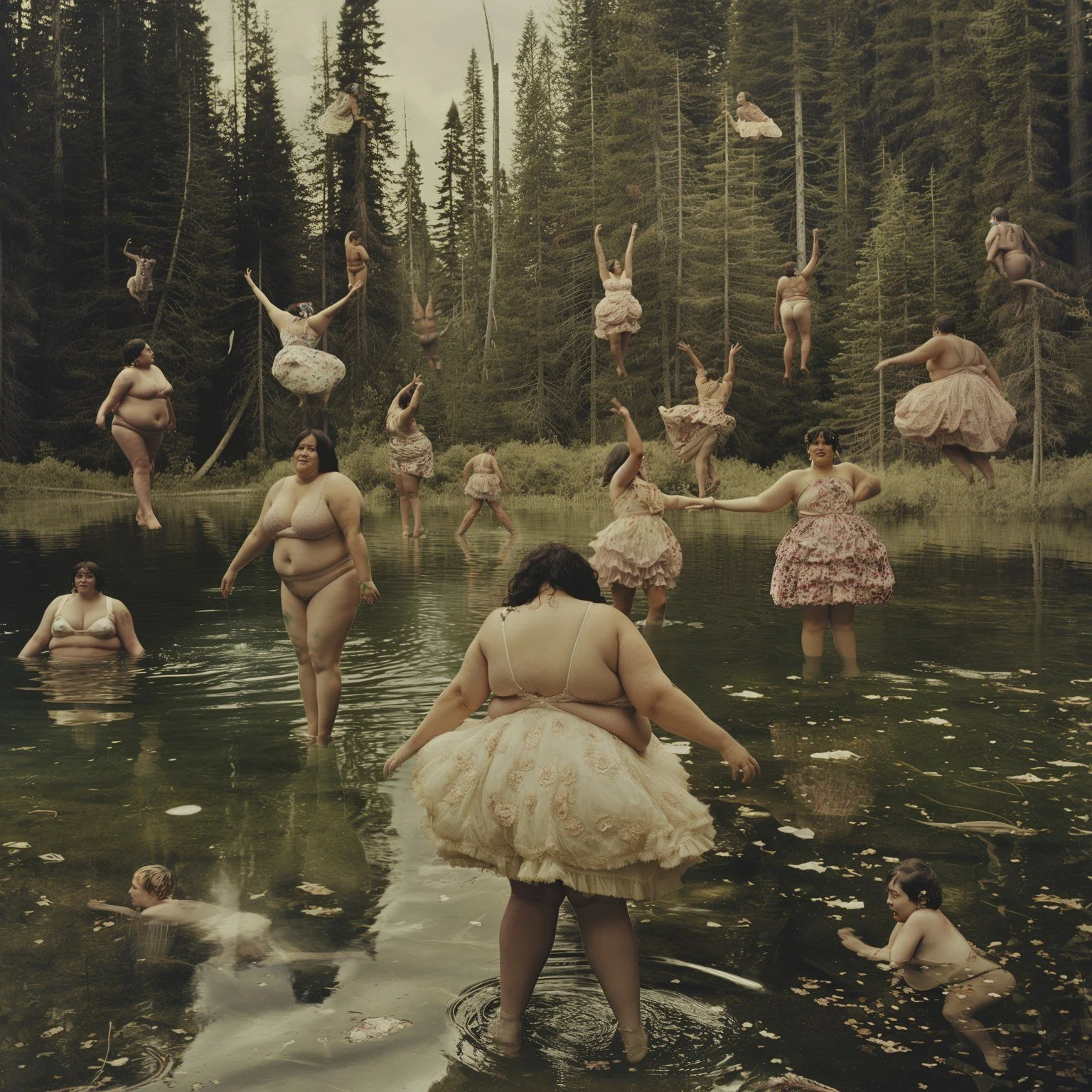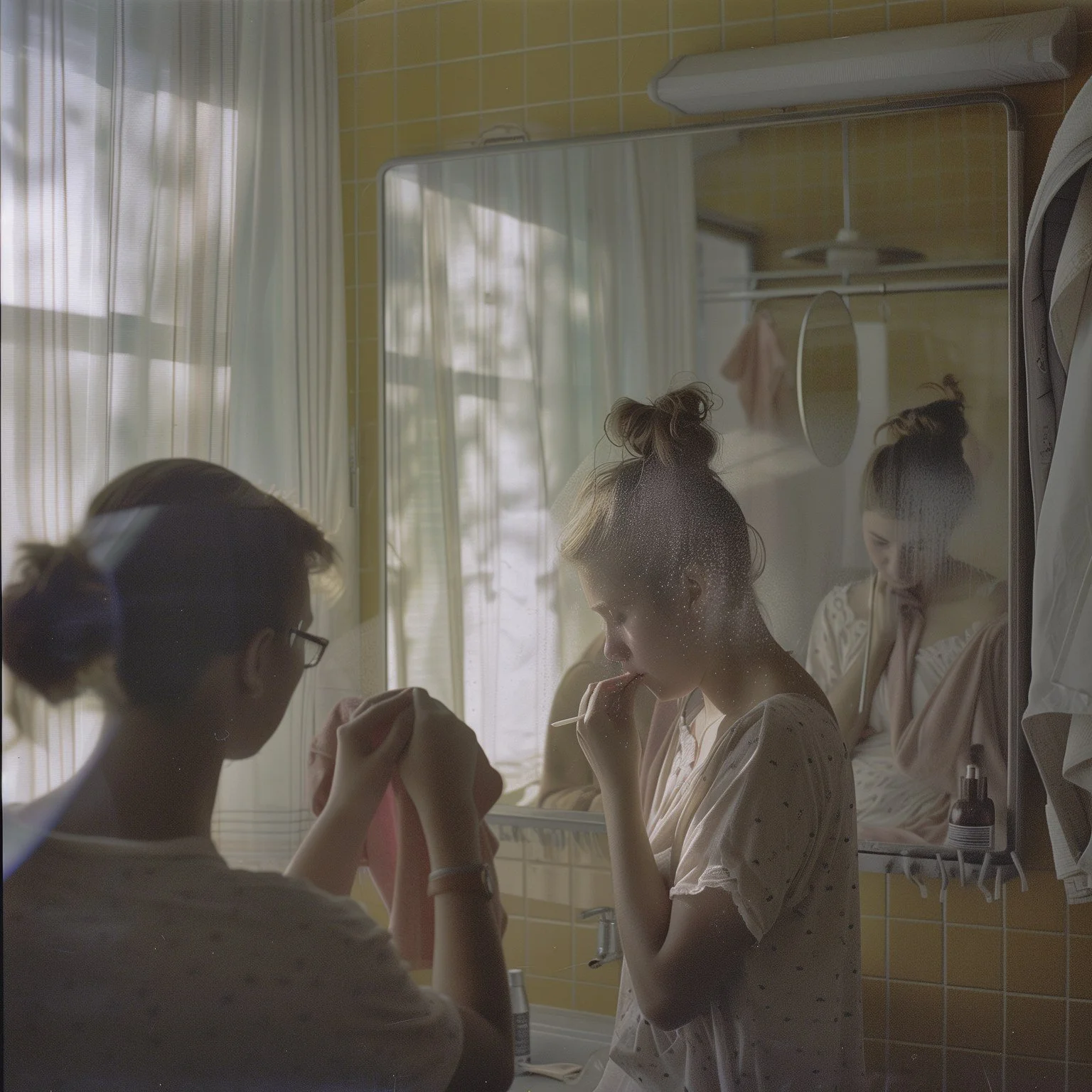Meet Laura!
Introducing Laura Rautjoki, (IG: @lrautjokiart) a trailblazing photographer from Finland who is currently studying in the Master's program in Photography Art at the Turku Academy of Fine Arts. Through her artistic thesis, Laura explores the representation of women in Finnish photographic history, using artificial intelligence to create alternative perspectives on the portrayal of Finnish women in photography.
Her groundbreaking research delves into the question, "How can a photographer utilize AI as a tool for artistic creation?" Laura believes that this research question will increasingly emphasize the role of the creator and artistic agency in the outcomes of AI-generated art. With an upcoming exhibition at the Molet Gallery in the Forssa Museum in September 2024, supported by a grant from Finnfoto, Laura's work promises to push the boundaries of photography and spark thought-provoking conversations about the intersection of art, technology, and representation.
Can you tell us a little bit about your research?
My research on the representation of Finnish women in photographic history is divided into two parts: artistic work and a written thesis report. Despite being in its early stages, I have made important observations that influence my artistic choices.
Throughout my career, I have been interested in portraying the Finnish woman in a raw and honest manner, devoid of pretense. Finnishness is reflected in my photos through the portrayal of women, atmospheres, and environments.
One aspect of Finnish photography history particularly affects me as an artist. Based on my observations, Finnish women were not typically depicted to please men, regardless of the photographer's gender, with only a few isolated cases showing signs of flirtation.
Not being raised within gender stereotypes, my strength as an artist lies in interpreting femininity based on that observation - depicting a woman as she is, not for the sake of male gaze. This is the starting point of my artistic work, also when working with artificial intelligence, as I describe Finnish photographic history through my own artistic vision.
Exploring Finnish photographic history before the influences of film industry and modern times, I have noticed subtle differences in the images captured by male and female photographers. Male photographers seem to portray women's posture as more refined and aspiring to nobility, conveying dignity rather than feminine qualities. Photographs taken by women of women appear somewhat more neutral and unposed.
Here are two examples from historical photos: one depicting a woman by a female photographer, and the other by a male photographer.
Original photo: Augusta Olsson (female), The Photo has taken between years 1900-1929. Miss Grundsten. Public Domain. Finna.fi
Original photo: Photographer J. Reinberg (male). Museum Centre of Turku, J. Reinberg’s collection. Fredrika Charlotta Maria Aminoff o.s. af Forselles (live 1824–1902); Portrait. Public Domain. Finna.fi
In my work, I am particularly interested in illustrating the history of photography with the help of artificial intelligence, focusing on the last decades from the 1960s. I am especially fascinated by the period between 1980 and 2010 and its aesthetics.
What fascinates me about this photo is the ability to clearly capture the visual features of the time, especially the representation of woman as active participants in a male-dominated field. This type of visual material serves as a source of inspiration for my work.
Original photo: Photographer unknown. Local Radio Etelä’s sound studio photographed in November 1988. Museo services of Kerava. Collection of the Municipal Planning Agency. CC0. Finna.fi
I have created an alternative visual narrative using artificial intelligence. At this stage of my work, I have several lines from which I generate images: historical imagery, portraits, documentary imagery, a visual narrative of my personal history in connection with the photographic language of that time, and surrealist images. In surreal images, I am particularly drawn to the errors produced by artificial intelligence. It is important for me to incorporate portraits of individuals of all sizes and appearances.
These images represent documentary AI photography. I have created a series of documentary portraits featuring daycare staff. This group is a cornerstone of our welfare society but often goes unnoticed.
1st image: Daycare director.
2nd image: Pia, childcare worker in the Blueberries group.
The 3rd and 4th images are part of another documentary AI photo series depicting the life of my youth in a dormitory with my classmates, mainly girls.
In creating a historical visual narrative with artificial intelligence, I am interested in generating images that deviate from the norm in some way.
In the first image, I have used AI to generate a picture where women appear remarkably liberated, joyful, and experiencing a sense of well-being. Smiling faces are rarely seen in Finnish photographic history, partly due to long exposure times but also for cultural reasons.
In the second image, I aimed to create a photograph conveying the sensitivity of friendship, set in the early days of Finnish photographic history.
These images are not examples of my artistic expression through the use of artificial intelligence. For the first image series, I prompted the AI with the command: 'Just a normal Finnish woman photographed by a Finnish woman,' and for the second, I used the command: 'Just a normal Finnish woman photographed by a Finnish man.' These images highlight the differences in AI-generated images between prompting a female and male photographer.
This image led me to a significant realization about my own thinking. In the prompt for this picture, I initially believed I had set a male photographer capturing a Finnish woman. My assumption was that this is typical. However, upon realizing that I had actually set the prompt for a female photographer, my perspective shifted, and I thought, 'How wonderful, this is a feminist image.' At this point, I paused to reflect on my thoughts and how much the context from which we view an image influences our perception. It's crucial to be aware of this when interpreting any photograph.
As an artist, what have been your key reflections on working with artificial intelligence?
An observation I made is related to the visual language I create with AI. The feedback from those who have followed my career longer has been amazing: 'How have you managed to evoke the same Finnish melancholic atmosphere in these pictures as you express in your own photographic language?' This kind of feedback encourages me to continue and is proof that I have succeeded in capturing with AI the atmosphere that my own long-term artistic expression conveys. Every artist interested in creating images with artificial intelligence understands how challenging it is to achieve the desired result in images. From this point of view, I have been thinking about the copyright issues of images created by artificial intelligence and the relationship between the author and the fulfillment of artistic thresholds throughout the project.
Above all, the focus of my entire project is a sincere interest in learning and expanding my understanding of the possibilities of AI as an artist. I hope to be able to bring new insights to the field of Finnish photography through this research trip.
For more of Laura’s incredible work, make sure to visit her Instagram account: @lrautjokiart
The works will be on display at the Gallery Moletti of the Forssa Museum in Finland from September 17 to October 13, 2024.















